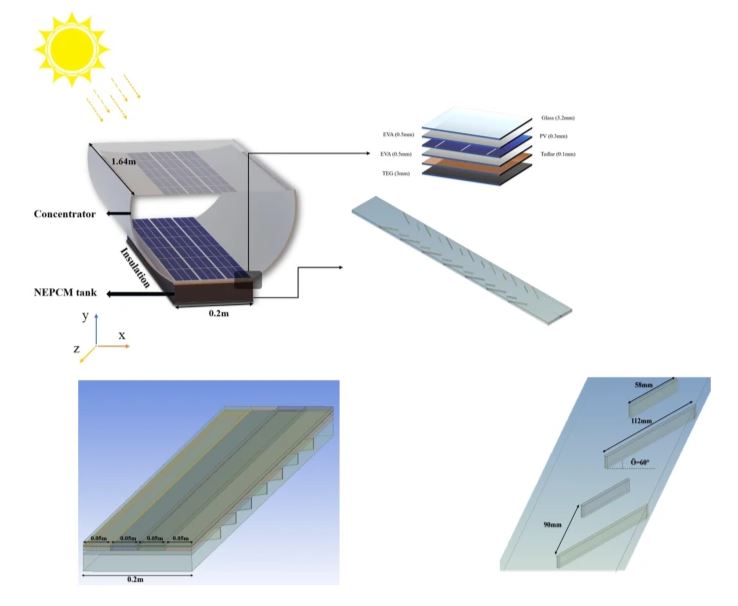Scientists in Iran have designed a CPV system that integrates a paraffin-based fin nanomaterial cooling system as well as thermoelectric generators that convert waste heat into electricity. Simulated results showed that, with the cooling system in place, PV efficiency improves by approximately 16.46% under clean conditions.
Researchers from Iran’s Babol Noshirvani University of Technology have investigated improving the electrical efficiency of PV panels by simulating a concentrating PV system (CPV) that integrates parabolic reflectors, a paraffin-based nanomaterial cooling system aimed at lowering the temperature of the solar module, and a thermoelectric generator. TEG) that converts the excess thermal energy into electrical energy.
“To simulate the heat flux introduced by the reflectors, SolTrace software was used, while the unsteady, three-dimensional thermal behavior of the system was analyzed using Ansys Fluent,” the researchers explained. “The innovation of the current paper lies in the combined use of SolTrace for accurate reflector modeling, analysis of heat flux variation across PV layers, and the response of the layered structure to dust accumulation.”
Several cases were tested in the simulation program; the first included only the CPV panel for reference. In the second case, a cooling system has been implemented under the panel using a container filled with paraffin (RT35HC) supplemented with nanoparticles of single-walled carbon nanotubes (SWCNT). In the third case, the container also contained a series of fins to promote conductive heat dissipation across the surface of the PV panel.
All three of these cases were then tested under clean conditions and under dust deposition. Later, all versions of the system were also equipped with a TEG. TEGs can convert heat into electricity through the ‘Seebeck effect’, which occurs when a temperature difference between two semiconductors causes a voltage difference between two substances.
“Simulated results have shown that, with the cooling system in place, PV efficiency improves by approximately 16.46% under clean conditions. However, the accumulation of dust on the panel significantly affects performance, reducing efficiency by approximately 46.48% after 60 minutes,” the academics pointed out.
“The addition of fin structures further optimizes the system, increasing overall efficiency by approximately 6.77% in clean conditions and 3.78% in dusty conditions,” she added. “The thermal efficiency for the clean state has increased by approximately 8.47% thanks to the fins.”
Concluding its work, the team said that “the combined effects of parabolic reflectors, fin-enhanced cooling and TEG integration deliver an electrical output power approximately 2.94 times greater than that of a PV panel without any reflector or cooling modifications .”
Their findings were presented in “Development of a new solar system integrating photovoltaic and thermoelectric modules with paraffin-based nanomaterials”, published in Scientific reports.
This content is copyrighted and may not be reused. If you would like to collaborate with us and reuse some of our content, please contact: editors@pv-magazine.com.


